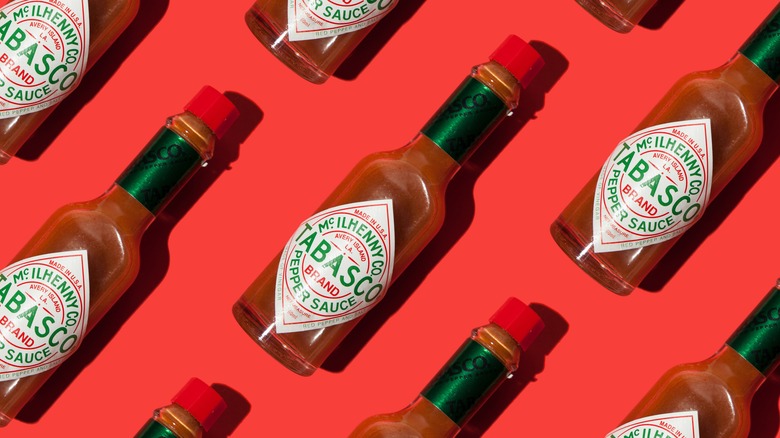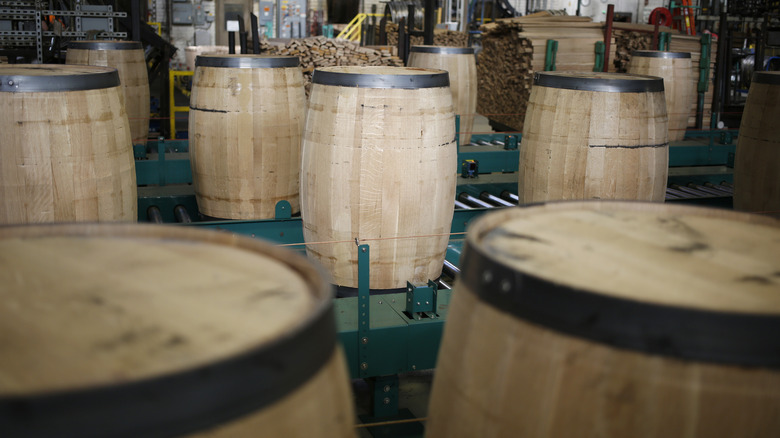The Barrel-Aging Method For Making Tabasco Sauce Is Similar To Whiskey
There's a reason why Tabasco has withstood the test of time and remains on restaurant tables and grocery store shelves after more than 150 years — and it's all in the process of how it's made. In case you don't already know, the classic hot sauce was first created in 1868 in Avery Island, Louisiana, by Edmund McIlhenny. It only has three ingredients: red peppers, distilled vinegar, and salt — so what makes the flavor pack a punch? It's barrel-aged for up to three years. For reference, many bourbons and whiskeys are in barrels for two to four (or more) years.
According to Tabasco's site, both the ingredients and barrel-aged method are virtually unchanged since it originated way back then. The result is a medium heat (depending on your tolerance). For reference, tabasco peppers are rated around 2,500 to 5,000 on the Scoville scale depending on the batch, which is hotter than what's in Frank's Red Hot or Texas Pete. All of that time in those barrels allows for the spice to reach this level while also developing the rich flavor you might be used to when you shake it onto your eggs or tacos.
How Tabasco's barrel-aging method works
How does this barrel-aging method work, anyway? It starts with the company mashing its tabasco peppers into a paste, mixing it with salt, then putting it in white oak barrels for up to three years. Tabasco has a warehouse filled with an estimated 73,000 white oak barrels in Avery Island, Louisiana. The barrels are sealed with salt to create a protective layer during the fermentation process, according to its site. When it's ready, it's mixed with high-quality distilled vinegar, giving it acidity and pungent flavors.
The result is the Tabasco hot sauce (or pepper sauce as its bottle says) that you buy off the shelf. These days, you can also buy seven other variations of Tabasco, including green jalapeño sauce, chipotle pepper sauce, and scorpion sauce, which was added to its product lineup back in 2017, and is up to 10 times hotter than the classic sauce we've been explaining. And in case you're wondering, the company reuses the barrels after the years-long process as long as they are still in good condition.

